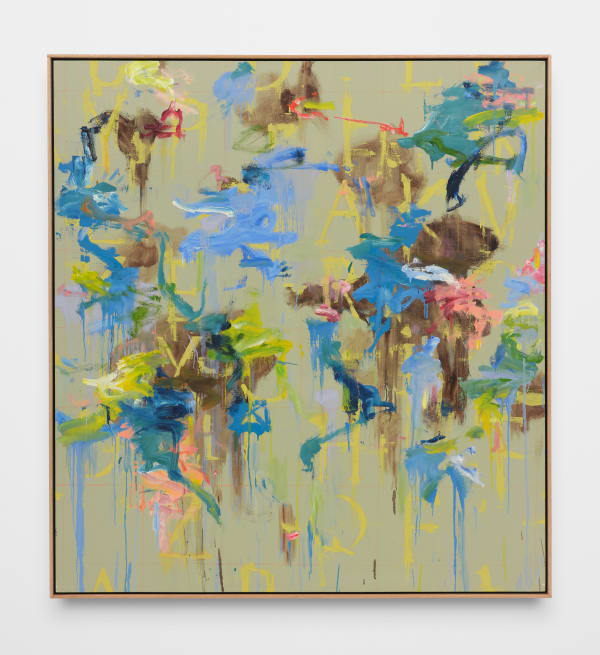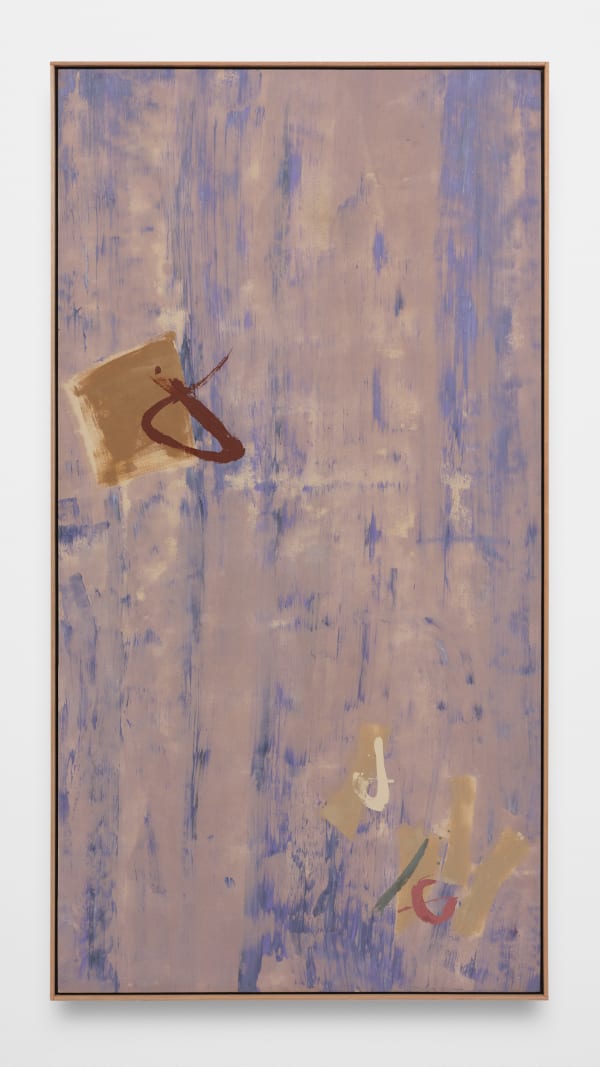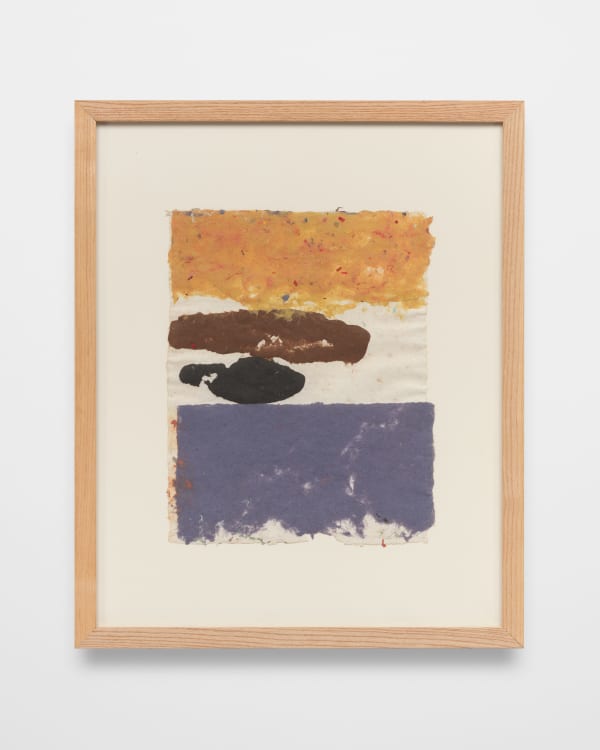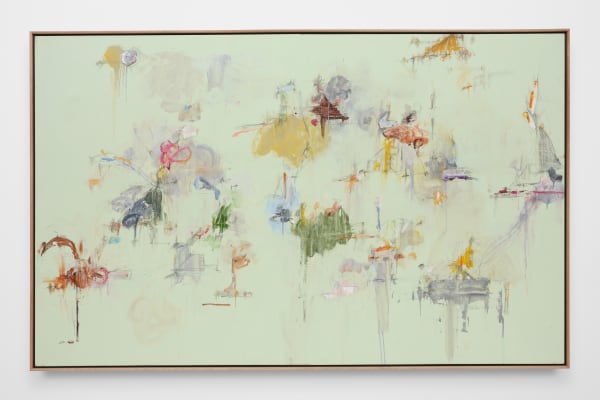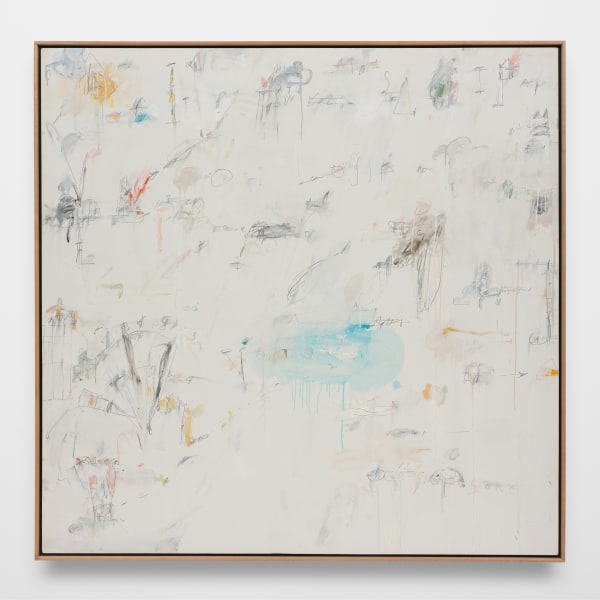Kikuo Saito: Ouray
-

-
Altman Siegel is honored to present Ouray, the gallery’s first exhibition with the estate of Kikuo Saito (1939-2016).
Long overlooked within traditional art historical discourses, Saito’s practice, and life, articulate a state of in-betweenness. Informed by his background in the theater, the artist created space for himself within established Color Field circles by devising a distinctive lexicon that integrated his multitude of experiences and artistic interests. Hence, Saito’s paintings are both historically significant and timely, reflecting a need to contemplate the hybridity and complexity of personal identity.
-

-
Saito relocated from Tokyo to New York in 1966 with only one pair of shoes, several tubes of oil paint, and $500 in cash. Shortly after, he began organizing performances at the celebrated La MaMa Experimental Theatre Club, where he met and went on to collaborate with theater director Robert Wilson. Looking to the Japanese traditions of Kabuki and Noh, as well as emerging postmodern theater, Saito would frequently paint the backdrops for his own productions. While his collaborative, multidisciplinary approach earned him acclaim for his stage work, this experience may have had even greater significance for his works on canvas.
-
In the years that followed, Saito accepted a job as studio assistant for painter Kenneth Noland, where he stretched canvas and mixed paint. He began working for Helen Frankenthaler and Larry Poons shortly following this. By 1979, the artist had committed himself entirely to painting, favoring the quietude of the studio to the public realm of the stage. The studio provided Saito with the space to manipulate paint across the canvas on both the easel and the floor so that he could utilize his entire body when painting. Rather than forgoing his ties to the theater, Saito developed a new relationship to it, one that emphasized both its gestural and conceptual capacities. From the movement of paint across his canvases to the interplay between surface and background in his work, Saito explored the ways painting, like theater, can distill action and sensation.
-

-
Saito’s painting practice can be grouped not into periods, but into styles that he would revisit repeatedly. The cyclical nature of his process was generative, with the artist believing that “repetition can be very important, but it has to mean something different every time.” Saito’s output can be broadly grouped into the Color Field Paintings, the Theatre Paintings, the Alphabet Paintings, and the Lyrical Paintings, each of which are represented in this exhibition. Altman Siegel is delighted to also present a selection of Saito’s drawings, handmade paper works, and a handmade piece of furniture that served as one of his theater props.
-

-
The artist’s earliest paintings, his Color Field works, incorporate broad applications of color that are broken open by more intricate, gestural marks. As he began his painting career using acrylic before transitioning to oil, the low viscosity of the paint would let it perform like a character from one of his stage productions. The expressive movement of acrylic across the canvas and the tension between foreground and background, like curtain and stage, is indicative of the interplay between painting and performance throughout Saito’s oeuvre.
-

-

-
It was in these instances of discovery that Saito was able to develop his own highly inventive vision of Color Field painting. The artist’s navigation of his dual existence – as a Japanese American, as a painter and theater director, as an artist on the inside and outside – have created moments that resist straightforward interpretation. Rather, these dualities allowed him to consider the transience of meaning, creating paintings that use color to surprise, innovate, and transform.
-
-

-
-

-
-
-

-

-
-
-

-
-

-
-
-
-

-
-
-
-
Alexander Nemerov, Reiko Tomii, and Joshua Cohen discuss the ongoing significance of Kikuo Saito's life and practice. Each speaker provides a unique lens into the art historical, biographical, and wider sociocultural context of the artist's work. This event took place on May 7, 2022 at Altman Siegel.
Kikuo Saito: Ouray Panel Discussion
with Alexander Nemerov, Reiko Tomii, and Joshua Cohen -

Kikuo Saito’s work has been the subject of solo exhibitions at KinoSaito Art Center, Verplanck, NY; James Fuentes, New York, NY; Fort Lauderdale Museum, Fort Lauderdale, FL; Duke University Museum of Art, Durham, NC; Loretta Howard, New York, NY; Bookstein Projects, New York, NY; Jonathan Novak Contemporary Art, Los Angeles, CA; Leslie Feely, New York, NY; and Jill Newhouse Gallery, New York, NY. Group exhibitions include McNay Art Museum, San Antonio, NY; Boca Raton Museum of Art, Boca Raton, FL; Portland Art Museum, Portland, OR; San Antonio Museum, San Antonio, TX; Edith C. Blum Art Institute, Annandale-on-Hudson, NY; Edmonton Art Gallery, Edmonton, Canada; Medellin Biennial, Medellin, Colombia; and The Aldrich Contemporary Art Museum, Ridgefield, CT. Saito’s theater work has been staged at La MaMa Experimental Theatre Club, New York, NY; Duke University Museum of Art, Durham, NC; the Byrd Hoffman Foundation, New York, NY; Opera Comique, Paris, France; and Iino Hall, Tokyo, Japan. The artist’s work can be found in the collections of the Museum of Modern Art, New York, NY; the Whitney Museum of American Art, New York, NY; Nasher Art Museum, Durham, NC; The Aldrich Contemporary Art Museum, Ridgefield, CT; and Edmonton Art Gallery, Edmonton, Canada.
-
For more information contact info@altmansiegel.com or 415.576.9300.










